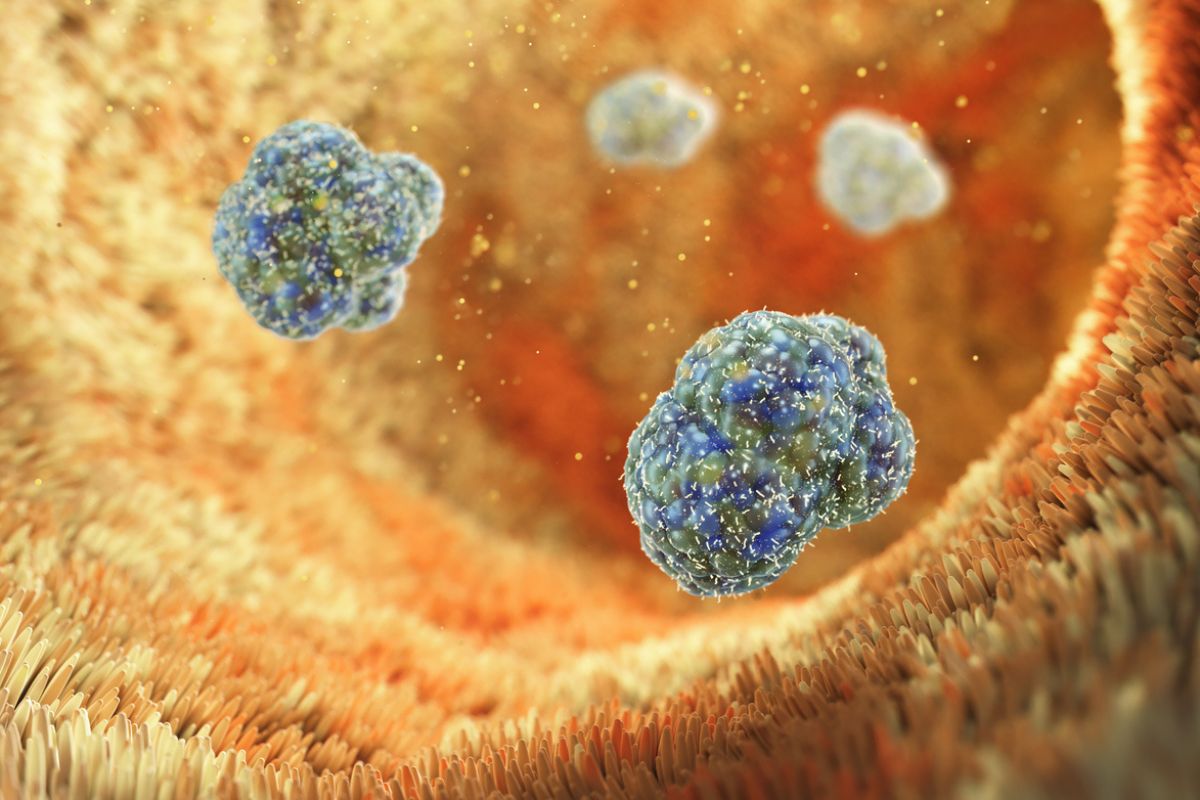Although researchers recognize dopamine as a pharmacologic target for schizophrenia, other neurotransmitters also play a role in the disease’s pathophysiology. These other actors include the cholinergic neurotransmitter acetylcholine, the inhibitory neurotransmitter gamma-aminobutyric acid (GABA), and the excitatory neurotransmitter glutamate.
Additional mediators with a pathophysiologic role in schizophrenia include serotonin and inflammatory cytokines. Recognizing the roles of these neurotransmitters recognizes a broader understanding of dysfunctional neurotransmission and neurochemical pathobiology in patients with schizophrenia paving the way for non-dopaminergic therapeutic strategies.
Dopamine
As far back as the early 1960s, Arvid Carlsson and Margit Lindqvist proposed dopamine blockade as a management strategy for schizophrenia. At first, researchers thought that early therapies such as chlorpromazine and haloperidol worked through broad monoaminergic receptor blockade. But they soon figured out that dopaminergic blockade was the crucial component.
Dopaminergic dysfunction occurs in all across the brain, spanning the substantia nigra, ventral tegmental region, striatum, prefrontal cortex, and the hippocampus. More specifically, researchers identified the D1 and D2 receptors as the primary culprits in multiple schizophrenia symptoms.
Notably, researchers identified a link between D2 receptor activation and positive symptoms such as hallucinations and delusions. On the other hand, the data show that reduced D1 activation in the prefrontal cortex and caudate nucleus appear connected to schizophrenia’s darker traits.
Overexpression of D3 receptors might also modulate negative symptoms. Evidence has shown a connection between excess striatal D3 receptors in mice and disrupted motivation.
Advancements in brain imaging – leveraging emission tomography – help scientists get a better look at neurotransmitter activity in specific brain regions of the brain. As a result, researchers have a more nuanced grasp of how dopamine influences schizophrenia – pointing to hyperactivity in some dopaminergic circuits and deficits in others.
For example, excessive dopaminergic transmission within mesolimbic pathways and reduced dopaminergic neurotransmission in the prefrontal cortex appear to play a role in schizophrenia. Additionally, dysregulated dopaminergic signaling in the prefrontal cortex and amygdala, among other brain regions, might contribute to negative symptoms and emotional processing deficits.
However, researchers know more about other neurotransmitters, including acetylcholine, GABA, glutamate, and serotonin, as well as inflammatory cytokine signaling. This understanding has led to a more nuanced understanding of the roles of multiple neurotransmitters and brain circuits in the pathophysiology of schizophrenia.
Acetylcholine
Acetylcholine is the primary cholinergic neurotransmitter of the nervous system, stimulating multiple receptor subtypes, including the muscarinic and nicotinic receptors.
- Muscarinic receptor subtypes – M1 through M5 – primarily operate in the central nervous system and sweat glands.
- Nicotinic receptor subtypes – N1 and N2 –serve skeletal muscle (N1) and the peripheral and central nervous system (N2).
As part of the cholinergic system, these receptors mediate a variety of physiologic functions that include memory, muscle movement, perspiration, gastrointestinal motility, urinary urgency, and among others.
Researchers have uncovered ample evidence of the role of cholinergic neurotransmission in the pathophysiology of schizophrenia, such as:
- Reduced expression of muscarinic receptors in post-mortem and neuroimaging studies.
- Increased binding of nicotinic drugs in the brain tissue of persons with versus without schizophrenia.
- Nicotinic signaling in sensory gating tasks.
- Reduced mRNA expression of the alpha-7 nicotinic receptor splice variant.
Beyond these preclinical data, the effect of nicotinic and muscarinic agonists in patients with schizophrenia provides evidence of therapeutic effects. Nicotine exposure through tobacco is common in schizophrenia patients. And multiple studies have highlighted lower negative symptom scores in patients with more severe nicotine dependence.
Additionally, habitual use of betel nuts might mitigate schizophrenia symptoms based on the presence of the M1 and M3 cholinergic agonist arecoline. In 40 betel nut users with schizophrenia versus 30 nonusers with schizophrenia, researchers observed reduced symptoms among habitual betel nut consumers. These observations helped inform the development of cholinergic therapeutics.
GABA
As the major inhibitory neurotransmitter in the central nervous system, GABA has important roles in schizophrenia. In schizophrenia patients, disruptions in neural synchrony regulated by GABAergic interneurons could lead to memory and perception changes. Fast-spiking chandelier cells that express parvalbumin show a strong connection to increased schizophrenia risk.
Notably, researchers have tied the partial loss of function of neuregulin 1 – or its receptor ErbB4 – with abnormal mice behavior. They theorized that similar functional mutations in humans boost schizophrenia risk based on genetic studies of five Icelandic families with a history of the disorder.
GABA agonists in schizophrenia have shown preliminary evidence of efficacy in early studies, indicating potential for future therapy development.
Glutamate
Glutamate, the primary excitatory neurotransmitter in the central nervous system, activates N-methyl-D-aspartate (NMDA) receptors to open ion channel pores, which increases the likelihood of forming an action potential. Glutamates assist with memory formation, particularly within the hippocampus.
Evidence for dysfunctional glutamate neurotransmission in schizophrenia includes lower levels of glutamate in schizophrenia patients. Consistent with hypofunctional NMDA signaling by glutamate, drugs such as phencyclidine and ketamine could induce symptoms of psychosis by acting as NMDA antagonists.
These findings suggest a potential future role of glutaminergic therapeutics in schizophrenia.
Serotonin
Evidence for the role of serotonin, or 5-hydroxytryptamine (5-HT), in the pathophysiology of schizophrenia, includes a known relationship between 5-HT(2A) agonist activity of D-lysergic acid diethylamide (LSD) and its hallucinogenic effects.
The blockade of both dopamine and 5-HT(2A) receptors by antipsychotics further suggests a connection between serotonergic signaling and the pathophysiology of schizophrenia.
Inflammation
In addition to monoaminergic neurotransmitters, researchers have hypothesized that inflammatory cytokines and increased oxidative stress contribute schizophrenia. The immunological and inflammatory features of anti-NMDA receptor encephalitis, which could lead to signs of psychosis, suggest a potential relationship.
Further supporting evidence for inflammatory processes in schizophrenia includes alterations of the gut microbiome in patients with schizophrenia. Researchers hypothesize that the translocation of pro-inflammatory mediators from the gut contributes to neuroinflammation in schizophrenia.
As a result, probiotics, synbiotics, and prebiotics have been proposed as potential adjunctive therapies.
Conclusions
Given developments in the understanding of the that might enable management through strategies other than dopaminergic blockade. An understanding of these features of schizophrenia could better inform the development of further therapies and multimodal strategies.
Further Reading
Schizophrenia’s Acute Psychosis Crisis Calls for Novel Treatments
The Neurotransmitters of Sleep
Relationship of Neurotransmitters to the Symptoms of Major Depressive Disorder



